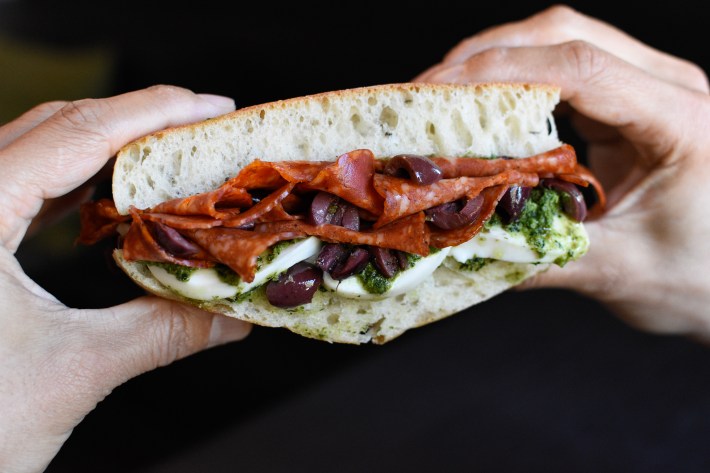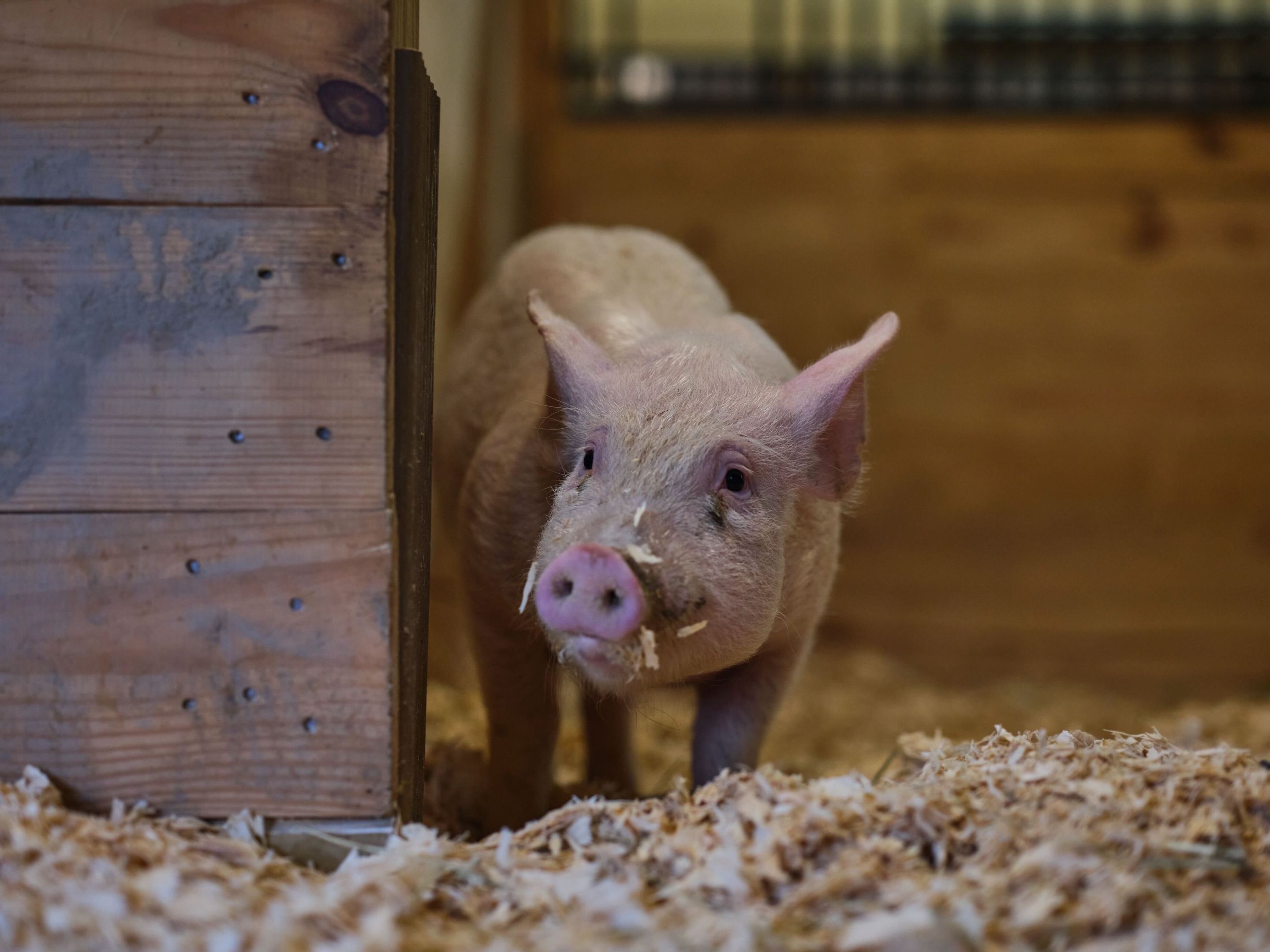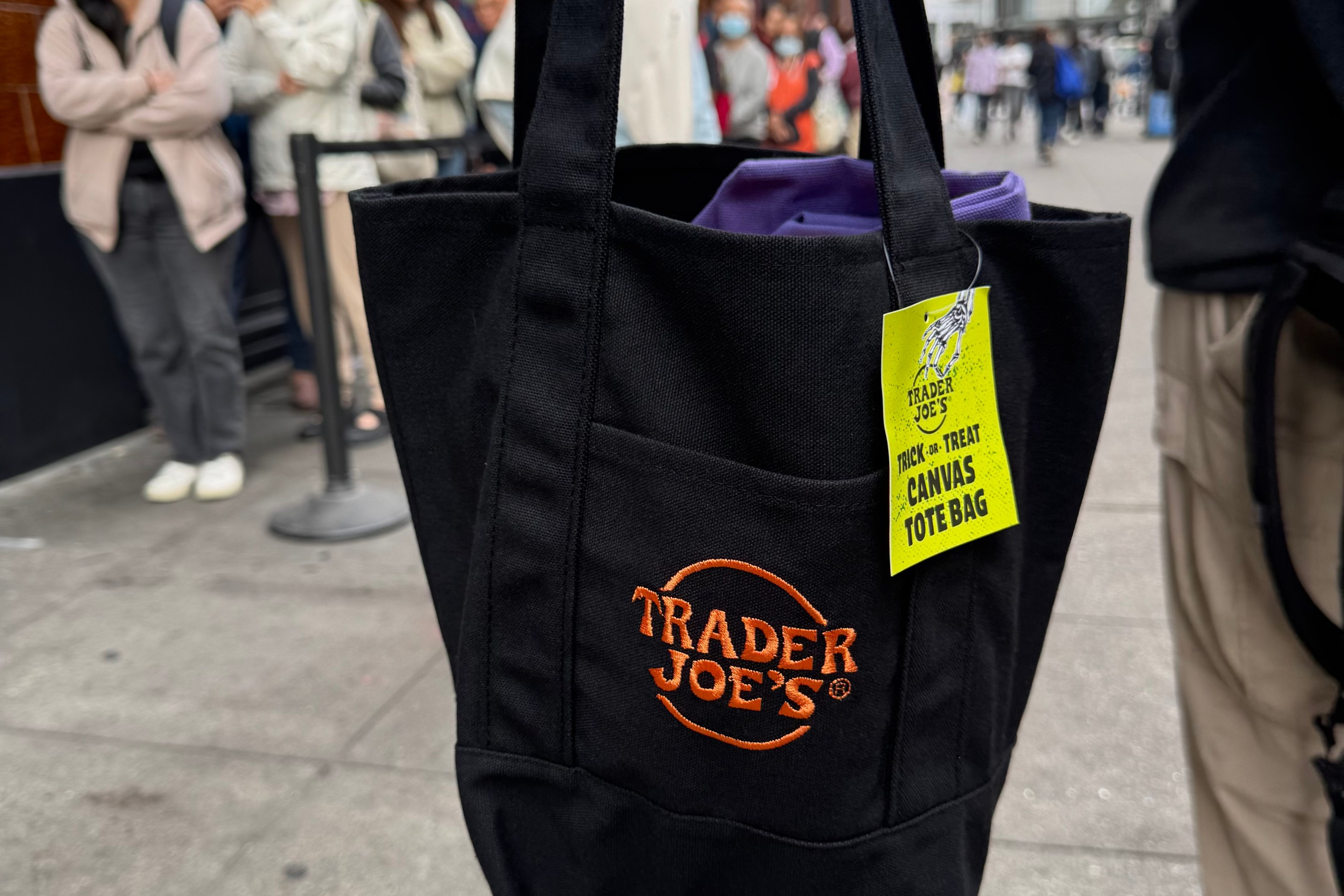Right now, a Yorkshire pig named Dawn is strolling around an upstate New York farm despite the fact that a group of agricultural industry folks and some curious eventgoers ate meatballs made from her in San Francisco last week.
Unlike 124 million of her brothers and sisters who are slaughtered in the US every year to make BLTs, pork chops, Christmas hams, and a thousand other dishes, Dawn gets to live her best life even as her body continues to yield cultured meat created by the San Francisco-based startup Mission Barns.
Cell cultivation, otherwise known as cellular agriculture, is a process whereby cells are extracted from living animals and grown under laboratory conditions into animal flesh. The meat that Mission Barns created using Dawn’s cells is a blend of this cultivated pork fat and plant proteins, soon to be sold as meatballs, bacon, and salami at the Oakland Sprouts. (This marks the first time a cultivated meat product will be sold in U.S. grocery stores.) They will also be sampled by diners via a pop-up dinner series with Fiorella.
San Francisco is having a cultivated meat moment. Wildtype, a Dogpatch-base startup, just launched its cultivated salmon in an acclaimed sushi restaurant. And two Bay Area-based cultivated chicken companies — Alameda’s GOOD Meat and Berkeley’s Upside Foods — have been approved to sell their products in the US.
Those concerned about our strained food system say cultivated meats offer a compelling proposition, lest we want to subsist on Soylent reserves in 150 years.
“There’s no debate that people love meat. The real question is, how can we satisfy the world’s growing desire for protein in safe, sustainable, and delicious ways?” said Enakshi Ganguly, a spokesperson of the Good Food Institute, a nonprofit think tank. “That’s where cultivated meat and seafood come in, and the Bay Area is setting a great example for how this field can innovate and scale.”
The number of US farms is shrinking, as is their acreage. The agriculture trade deficit hit a record high the first half of this year as the US faces shortages in critical export commodities such as beef, poultry, and corn. Mexico, Canada, and Europe are seeing similar downward trends. All the while, global demand for protein is projected to outpace the world’s supply by 2050.
Raising livestock for meat requires a lot of our domestic crop yield: We feed more of our soy, corn, and grains to livestock than we do humans. More than two-thirds of all agricultural land is devoted to growing feed for livestock, while just 8 percent is used to grow food for direct human consumption, according to the UN’s Food and Agriculture Organization. Meanwhile, agricultural yields are vulnerable to climate change and natural disasters, threatening some 40 percent of output in coming decades.
With cell cultivation, a very small number of cells can grow into large amounts of meat. One cell painlessly extracted from an animal can create an infinite amount of protein-rich food compared to what one pig could yield one time with their entire body.
“A pig requires a lot of feed, and that feed crops require a lot of land and water,” says Bianca Lê, a cell biologist and strategist at Mission Barns. “And all the nutrients going into growing the crops to then grow the animal is not just getting converted into meat. It's also getting converted into the lungs, the liver, the heart, the brains, all these other parts of the animal that you don't eat, so you're wasting a lot of resources to get to harvest just one portion of the animal.”
Globally, the cultivated meat industry comprises around 155 companies on six continents, and is backed by over $3 billion in cumulative global investments, per data from the GFI. China, for example, included the technology in its latest five-year agricultural plan as a way to stave off food scarcity and limit greenhouse gas emissions. (This is complemented perhaps by China’s waning imports of American meat products.)

In the US, “What’s needed now is a supportive policy environment, public-private partnerships, and clear pathways to market,” said Suzi Gerber, Executive Director of the Association for Meat, Poultry, and Seafood Innovation, a trade organization.
The FDA and USDA jointly regulate cultivated meat and poultry. The FDA first oversees the cell collection, cell banks, and cell growth, and differentiation. The agency then transfers oversight to the USDA, which follows the product through the harvesting phase of cell cultivation. The USDA also oversees any further production and labeling of the products.
However, the FDA unilaterally oversees cultivated seafood and game meat, as those are not regulated under the federal meat and poultry inspection acts. That meant one less regulatory abeyance for Wildtype, whereas Mission Barns awaited USDA approval for four months following FDA’s confidence stamp.
With regulators on their side, the only true barrier keeping cultivated meat and seafood out of stores — and off of plates — across the country is scale. Producers have yet to reach a viable production rate to stock nationwide — or rather, in 43 states since Florida, Alabama, Mississippi, Montana, Indiana, Texas, and Nebraska have banned cultivated meat production, with other states considering bans as well. While lawmakers claim the bans are to protect consumers from mislabeling, it’s worth noting that special interests are in play: Nebraska Governor Jim Pillen, for example, is well known as the owner and founder of the state’s largest pork producer.
But even Big Meat has caught on to the cell cultivation hype: Some of the largest meat companies in the world, including JBS, Tyson, and Cargill, have invested in cultivated protein companies or launched their own product lines. The only stakeholders yet to engage with the concept are consumers who seem to prefer being steak holders.
One reason for that may be attitudinal. The so-called “Make America Healthy Again” movement has soured appetites for genetically modified foods, but if consumers can look past the bioreactors and vats, they’ll learn that the animal cells used for these products are not genetically engineered or modified. (This aversion to genetic modification is precisely what keeps plant-based meats like Impossible off European shelves.) Cultivated meat also eliminates the potential for pollution or environmental factors that can impact the quality of animal meat, including how nutrient-dense the animal’s diet is. Mission Barns’ feed stock allows them to manipulate the nutritional content of their products, such as lowering saturated fats or adding Omega three fatty acids.
Nutrients and health benefits don’t matter, though, if consumers won’t try cultivated meats. The stories their makers tell about what gaps cultivated meat and seafood fill in our food system, how “clean” they are, how resource efficient the process is, or how many Dawns were saved mean nothing to consumers motivated by cost and taste.
“With the plant-based meat industry, there was initially a lot of hype and a lot of consumer interest, but after a while, I think consumers tried some of the products in the market and weren't really impressed,” says Mission Barns’ Lê. “The number one reason is because of taste. And the number one thing that is missing in these products is the lack of real animal fat. Plant oils don't really do the same thing.”
Mission Barns and Wildtype said their products are currently receiving traction among meat eaters and “flexetarians,” who may enjoy the taste and textural experience of animal meat.
With Wildtype’s launch at Robin last week and Mission Barns’ pop-up series with Fiorella on the horizon, Bay Area diners are at the forefront of the cultivated meat and seafood industry. Only time will tell when — or if — they’ll bite.
“We’re on the brink of food possibilities that simply weren’t imaginable before,” said Gerber, who can see “fresh cultivated seafood available in landlocked regions, nutritious options for people who previously had dietary restrictions, and the ability to locally produce meats that were once heavily imported.”
It’s a new dawn thanks, in part, to old Dawn.







